Understand and Treat White Prunicola Scale So You Don’t Lose Your Bushes
Skip laurels are a hugely popular choice for privacy screens and borders in gardening due to their dense foliage, fast growth and that they are evergreen. Unfortunately they are prone to a pesky infection that has the potential to spread if not taken care of. Have you ever noticed a powdery white substance on the branches of your skip laurels? This common issue, known as White Prunicola Scale, can affect your laurels, causing unsightly damage and potentially harming the health of your plants. In this blog post, we’ll explore what White Prunicola Scale is, how to identify it, and most importantly, how to treat and prevent it. By the end of this guide, you’ll have the knowledge to keep your skip laurels healthy and scale-free.
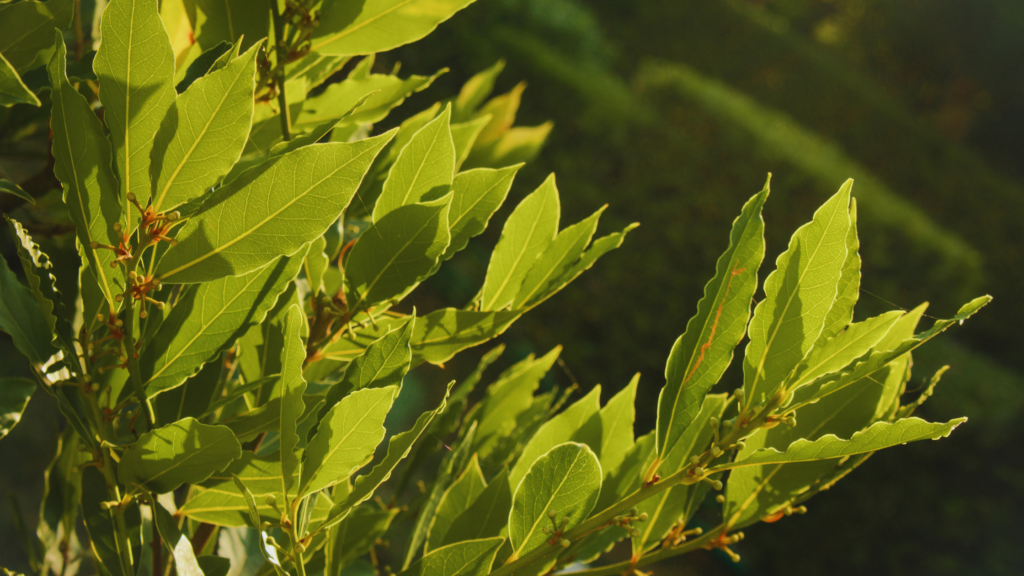
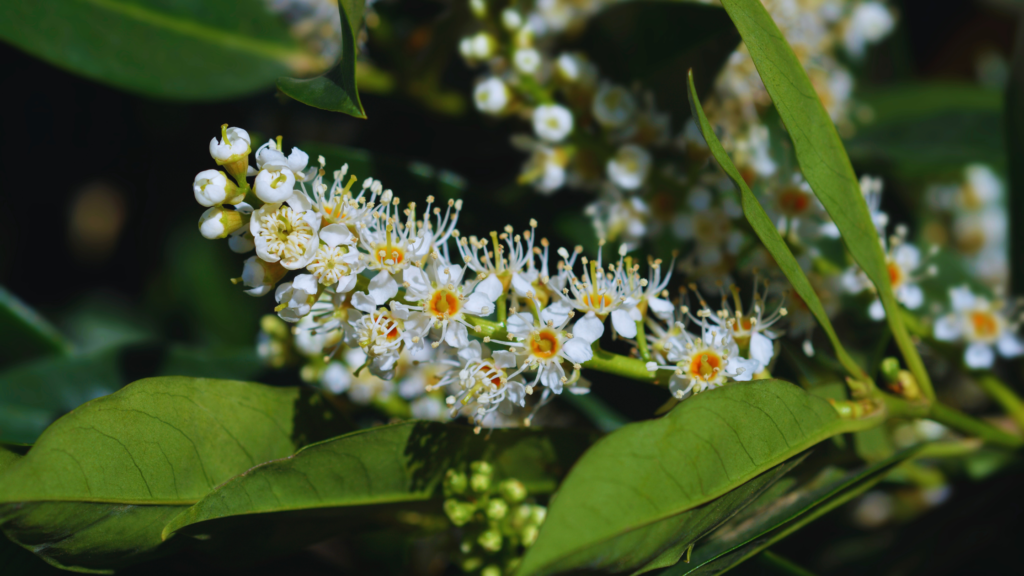
What is White Prunicola Scale?
White Prunicola Scale (Pseudaulacaspis prunicola) is a type of armored scale insect that appears as a white, powdery coating on the branches and leaves of plants, particularly skip laurels. These scales feed on the sap of the plant, causing stress and potential damage over time. This pest thrives in warm conditions and can spread rapidly if not controlled.
Sources: Penn State Extension: White Prunicola Scale
What to Look Out For:
Identifying White Prunicola Scale early is crucial for effective treatment. Here are the key signs to watch for:
- White or Grayish Powder: A powdery coating on the branches and leaves of skip laurels.
- Small White Scales: Tiny, circular, white scales attached to the bark and leaves.
- Yellowing Leaves: Infected leaves may turn yellow and drop prematurely.
- Branch Dieback: Severe infestations can lead to branch dieback and overall decline in plant vigor.
Sources: University of Maryland Extension: Scale Insects on Ornamentals
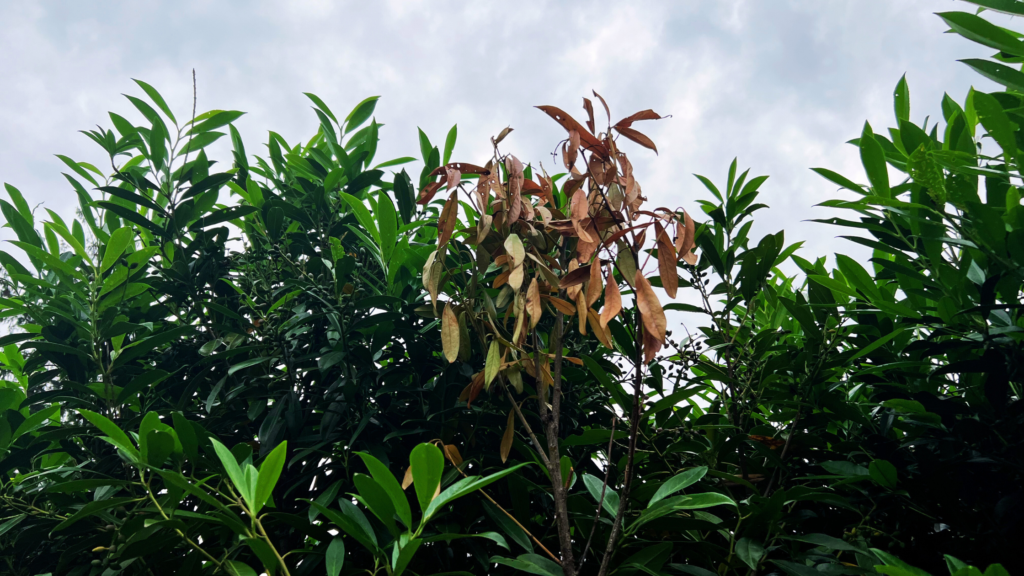
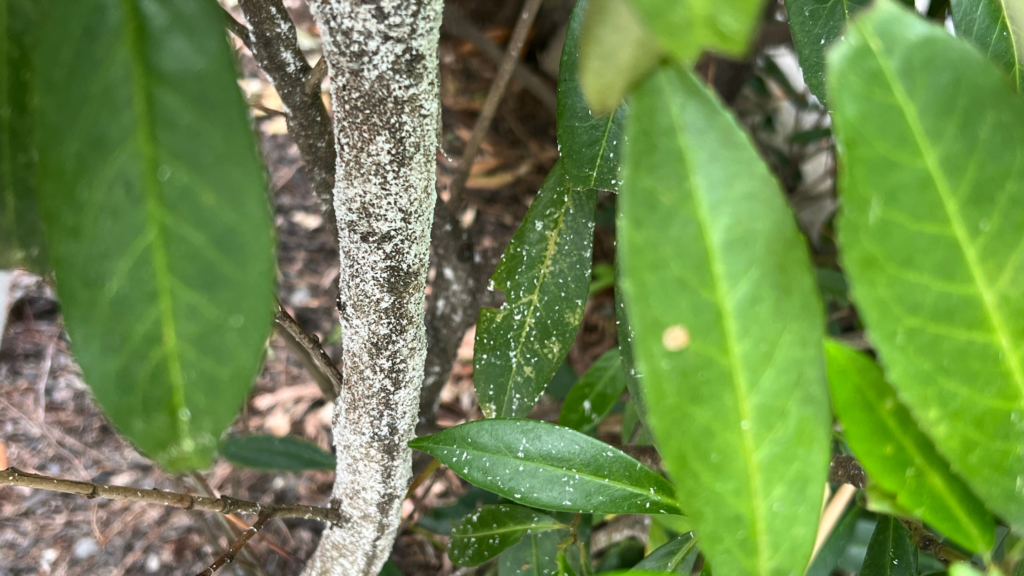
How to Treat White Prunicola Scale
Treating White Prunicola Scale involves a combination of cultural practices and, if necessary, chemical treatments. Here’s how to effectively manage and eliminate this pest:
- Prune Affected Areas: Remove and dispose of heavily infested branches to prevent the spread of the scales. Use sterilized pruning tools to avoid cross-contamination.
- Improve Air Circulation: Thin out dense foliage to increase airflow around the plants. Proper spacing of shrubs can also help reduce humidity levels.
- Apply Horticultural Oil or Neem Oil: Use horticultural oil during the dormant season to smother scale insects OR apply Neem Oil liberally and consistently. Follow the manufacturer’s instructions for application of both.
- Amazon Product Recommendation: Bonide All Seasons Horticultural & Dormant Spray Oil
- Amazon Neem Oil Recommendation: Bonide Captain Jack’s Neem Oil
- Introduce Beneficial Insects: Lady beetles and parasitic wasps can naturally control scale populations. Encourage these beneficial insects in your garden.
- Use Insecticidal Soap: For active infestations, apply insecticidal soap directly to the scales. Repeat applications may be necessary for effective control.
Sources: The Spruce: How to Control Scale Insects
Disclaimer: As an Amazon Associate, we earn from qualifying purchases. This helps support the blog at no extra cost to you!
How to Prevent White Prunicola Scale
Prevention is key to keeping White Prunicola Scale at bay. Here are some strategies to minimize the risk of infestation:
- Inspect New Plants: Before introducing new plants to your garden, inspect them for signs of scale insects.
- Maintain Plant Health: Healthy plants are more resistant to pests. Ensure your skip laurels receive adequate water, nutrients, and care.
- Regular Monitoring: Regularly inspect your plants for early signs of scale insects and act promptly if you see any symptoms.
- Encourage Natural Predators: Promote a garden environment that supports beneficial insects which prey on scale insects.
Sources: Clemson Cooperative Extension: Scale Management in Ornamental Plantings
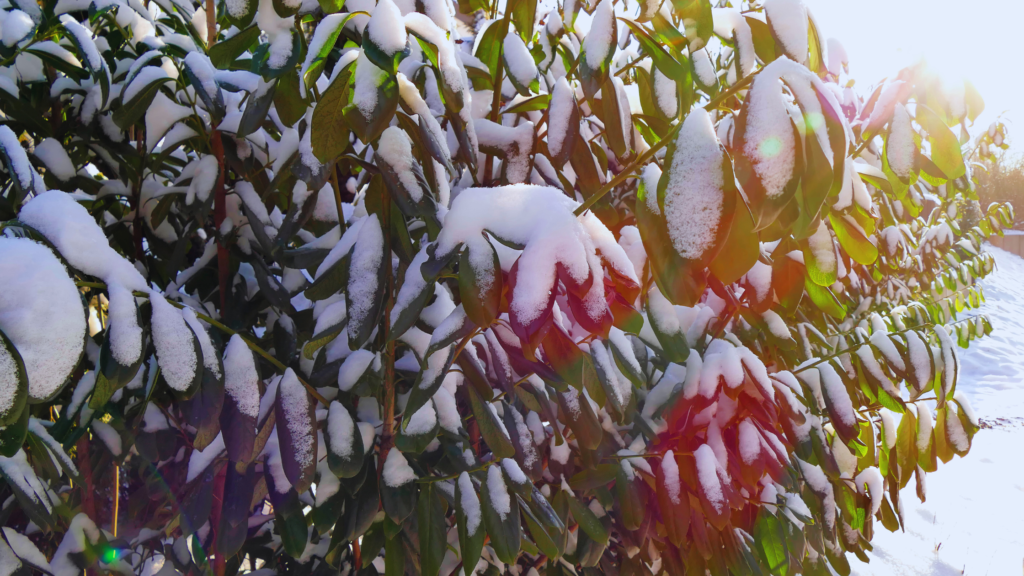
White Prunicola Scale is a common but manageable issue that can affect the health and beauty of your skip laurels. Because Laurels are a popular choice for privacy screens they are often planted in rows which enables the infestation to spread easily. By understanding what this scale insect is, how to identify it, and implementing effective treatment and prevention strategies, you can keep your garden looking its best and keep your privacy screen in tact. Stay vigilant, and with the right care, your skip laurels can remain healthy and vibrant, free from the powdery white menace.
In order to make sure you are staying ontop of your gardening to-do list make sure you follow along with our monthly checklists: June Gardening CheckList: Mid-Atlantic Edition



